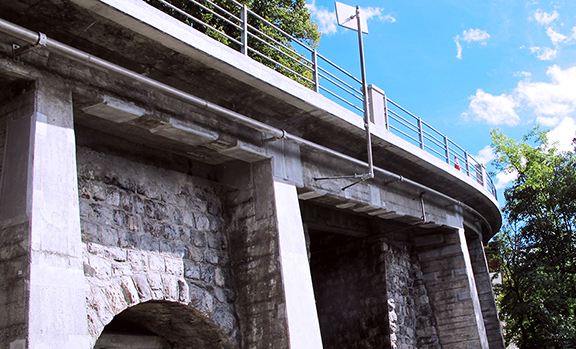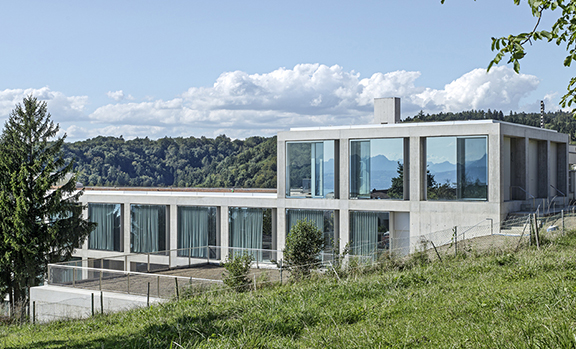Malley tunnel is located between the Malley and Bourdonnette stations on Lausanne’s m1 metro line. The structure was built in the late 1980s and passes under the Malley roundabout. It was built in sections using different construction techniques. The section at the Malley end of the tunnel was built using the cut and cover technique with soldier piles. For the next section, spanning the largest part of the structure, the cut and cover technique was used with diaphragm walls. The last section of the structure was built using a tremmie with diaphragm walls and retaining walls when the depth was shallow enough.
An initial series of urgently required measures were defined after INGPHI inspected the tunnel in 2010. The urgent measures were performed when service on the m1 line was interrupted in the summer of 2010. During that work, a thorough inspection was completed along with a damage and crack survey and additional tests. That inspection brought to light that the tunnel was heavily deteriorated in one area, and remediation work was planned accordingly.
The tunnel sections were analyzed by the finite element method taking into account the degradation of the materials.
The remediation plan was developed with two main objectives in mind: treat the chloride-saturated concrete and address the watertightness of the slab above the water infiltrations. The work was performed during a six-week service interruption in the summer of 2014. The following method was used to treat the concrete: hydrodemolition of the concrete cover, treatment of the steel elements with protective paint, and re-coating of the elements with shotcrete. To make the condition of the structure uniform and prevent it from deteriorating around the areas that were treated, the rest of the structure was treated as follows: high-pressure washing of the concrete to remove dirt, calcareous concretions and soil residue; and saturation with an MFP-type inhibitor to once again protect the steel reinforcements. The infiltrations were treated by injecting expanding acrylic resin into the spaces from inside the tunnel and applying joint tape to avoid residual infiltrations on the metro line.
Owner
TL - Lausanne Public Transport Company
Civil and geotechnical engineer
INGPHI SA, Lausanne
Provided Services
Detailed inspection
Verification and analysis of the structure
Rehabilitation project
Tendering
Detailed Design
Supervision of Construction WorksTechnical Characteristics
Tunnel length: 260 m
Cut-and-Cover length: 135 mPeriod
2010 - 2014
Construction Company
Dénériaz SA, Lausanne






